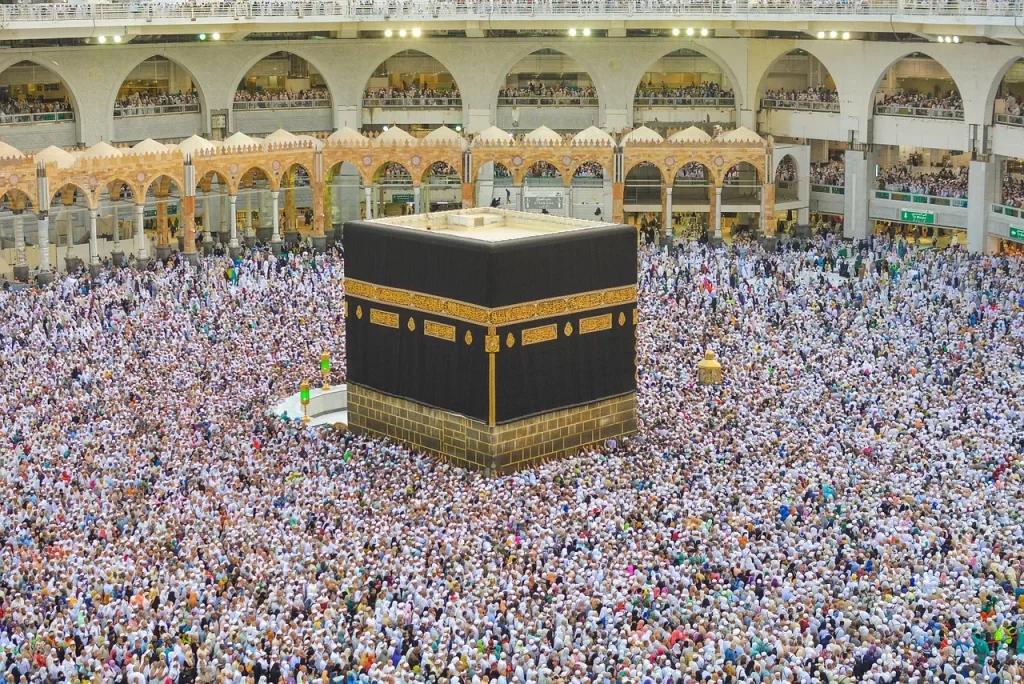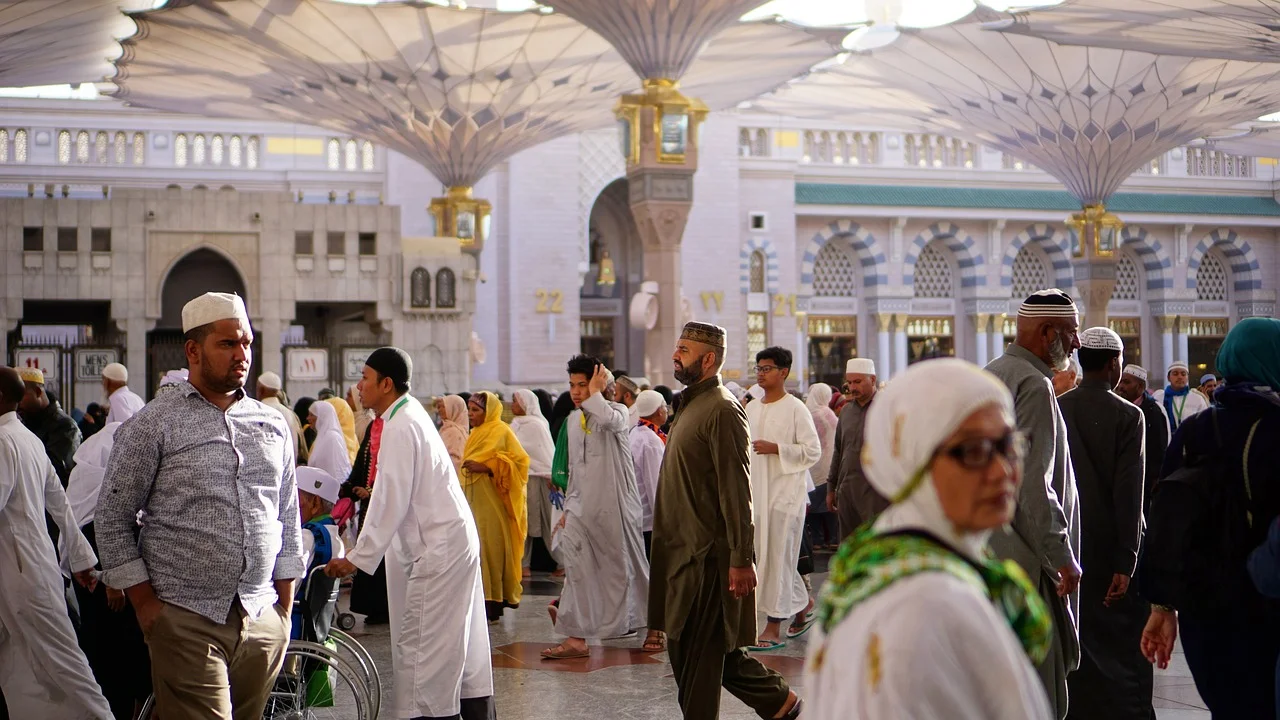The annual Hajj pilgrimage to Mecca is the largest gathering of people in the world, with millions of Muslims from around the globe traveling to Saudi Arabia to perform the sacred rituals. Managing such an enormous event requires extensive planning, coordination, and execution, which is where the Ministry of Hajj comes into play. The Ministry of Hajj is responsible for overseeing all aspects of the Hajj pilgrimage, from organizing transportation and accommodations to providing medical services and ensuring the safety and security of all pilgrims. In this article, we will explore the critical role that the Ministry of Hajj plays in managing the largest annual gathering of people in the world and how it accomplishes this monumental task. Most Viewed: Saudi Riyadh A Comprehensive Guide to the Capital of Saudi Arabia
The Scale of the Hajj Pilgrimage
The Hajj pilgrimage is a massive undertaking that requires the coordination and cooperation of various agencies, organizations, and institutions. The scale of the Hajj is mind-boggling, with millions of pilgrims from different parts of the world converging on Mecca for a few days of intense religious activity. According to the Ministry of Hajj and Umrah, the number of Hajj pilgrims exceeded two million in 2019, and this number is expected to rise in the coming years.
Managing such a large number of people requires significant resources, including accommodations, transportation, food, water, and medical services. The Ministry of Hajj works closely with various public and private sector entities to ensure that all pilgrims are provided with the necessary facilities and services. This includes coordinating with airlines to arrange flights for pilgrims, managing the distribution of food and water, and providing medical care for those in need.
The economic impact of the Hajj pilgrimage is also significant. The influx of millions of people into Mecca and other holy sites generates billions of dollars in revenue for the local economy, including hotels, restaurants, and souvenir shops. This revenue is essential for the continued development and modernization of the infrastructure necessary to support the Hajj pilgrimage.
Despite the enormous logistical challenges involved in managing the Hajj pilgrimage, the Ministry of Hajj has been successful in ensuring that the annual event proceeds smoothly and safely. The next section will explore how the Ministry of Hajj plans and prepares for the Hajj pilgrimage to achieve this success. Recommended: Expats in Saudi Arabia: The Effects of Policy Changes
Ministry of Hajj Planning and Preparation
The Ministry of Hajj’s planning and preparation for the Hajj pilgrimage begin months in advance. The first step in the process is to establish a comprehensive plan that outlines the logistics and resources required to manage the pilgrimage successfully. The Ministry works closely with various public and private sector entities to ensure that all necessary resources are available and in place before the arrival of pilgrims.
One of the critical areas of planning is transportation. The Ministry of Hajj coordinates with airlines and other transportation providers to arrange flights and buses to transport pilgrims from their home countries to Mecca. Once in Mecca, the Ministry manages a complex network of buses and trains to transport pilgrims between the various holy sites. In recent years, the Ministry has also introduced innovative transportation solutions, such as a light rail system, to ease traffic congestion during the Hajj pilgrimage.
Another essential aspect of planning and preparation is accommodations. The Ministry of Hajj works closely with hotel operators and other providers to ensure that sufficient and suitable accommodations are available for pilgrims. These accommodations range from simple tents to luxurious hotels, depending on the preferences and budgets of the pilgrims. The Ministry also ensures that these accommodations meet the required health, safety, and sanitation standards.
In addition to transportation and accommodations, the Ministry of Hajj also provides medical services to ensure the health and well-being of pilgrims. The Ministry operates several hospitals and clinics in Mecca and other holy sites, staffed with trained medical professionals and equipped with the necessary equipment and supplies to handle a wide range of medical emergencies. The Ministry also coordinates with other health organizations to provide additional medical support if needed.
Overall, the Ministry of Hajj’s planning and preparation efforts are critical to the success of the Hajj pilgrimage. The next section will explore how the Ministry of Hajj uses technology and innovation to improve the Hajj experience for pilgrims.

Technology and Innovation in the Hajj Pilgrimage
The Ministry of Hajj has been exploring the use of technology and innovation to enhance the Hajj experience for pilgrims. One of the most significant technological advancements introduced in recent years is the e-bracelet. The e-bracelet is a wearable device that contains a pilgrim’s personal and medical information, as well as their location. This device allows the Ministry of Hajj to track the movements of pilgrims and ensure their safety and security during the Hajj pilgrimage.
Another innovation introduced by the Ministry of Hajj is the use of drones for surveillance and crowd management. Drones equipped with cameras and sensors are used to monitor crowds, detect potential safety hazards, and provide real-time information to the Ministry of Hajj’s command center. This information helps the Ministry make informed decisions and take necessary actions to prevent accidents or incidents.
The Ministry of Hajj has also introduced several mobile applications to provide pilgrims with essential information and services. These apps include real-time updates on the location of transportation services, prayer times, and weather information. Pilgrims can also use these apps to request medical assistance, report incidents or complaints, and access other services.
Finally, the Ministry of Hajj has been exploring the use of artificial intelligence (AI) to enhance the Hajj experience for pilgrims. The Ministry is currently developing an AI-powered virtual assistant that can provide pilgrims with personalized recommendations and guidance on the Hajj rituals and other related activities. This virtual assistant can also help pilgrims communicate with the Ministry of Hajj’s command center, report incidents or complaints, and access other services.
The use of technology and innovation in the Hajj pilgrimage is an exciting development that has the potential to improve the safety, security, and overall experience of pilgrims. The next section will explore the challenges faced by the Ministry of Hajj in managing the Hajj pilgrimage and how it addresses these challenges.
Challenges Faced by the Ministry of Hajj
Managing the Hajj pilgrimage is a massive undertaking that presents numerous challenges for the Ministry of Hajj. One of the most significant challenges is crowd management. With millions of pilgrims converging on Mecca and other holy sites, ensuring their safety and security can be a daunting task. The Ministry of Hajj employs a variety of crowd management strategies, including the use of barricades, security personnel, and technology such as drones and cameras, to ensure that crowds are managed effectively.
Another challenge faced by the Ministry of Hajj is ensuring that the Hajj pilgrimage is accessible to all Muslims regardless of their socioeconomic status. The cost of performing the Hajj pilgrimage can be significant, which can make it difficult for some Muslims to participate. The Ministry of Hajj has implemented several measures to address this issue, such as subsidizing the cost of transportation and accommodations for some pilgrims, providing low-cost or free accommodations, and partnering with charitable organizations to provide financial assistance to those in need.
Health and safety are also critical concerns during the Hajj pilgrimage. With millions of people in close proximity, the risk of disease transmission and other health issues is high. The Ministry of Hajj provides medical services to pilgrims, including hospitals, clinics, and ambulances staffed with trained medical professionals. The Ministry also implements various health and safety measures, such as providing sanitation facilities and distributing free bottled water to pilgrims.
Finally, the Ministry of Hajj faces challenges related to managing the Hajj pilgrimage’s environmental impact. With millions of pilgrims, the Hajj pilgrimage can have a significant environmental impact, such as waste generation and energy consumption. The Ministry of Hajj has implemented several measures to address this issue, such as promoting sustainable practices, enforcing waste management regulations, and investing in renewable energy sources.
Overall, the Ministry of Hajj faces significant challenges in managing the Hajjpilgrimage, but it has implemented various measures to address them effectively. The next section will explore the Ministry’s future plans and initiatives to further improve the Hajj experience for pilgrims.
Conclusion
the Ministry ofHajj plays a crucial role in managing the largest annual gathering of people in the world. The Ministry faces several significant challenges in ensuring the safety, security, accessibility, health, and environmental sustainability of the Hajjpilgrimage. However, the Ministry has implemented various measures, including the use of technology and innovation, to address these challenges effectively.
Despite the challenges, the Hajj pilgrimage remains a unique and essential experience for millions of Muslims worldwide. The Ministry of Hajj recognizes the significance of the Hajj pilgrimage and remains committed to continuously improving the pilgrimage’s management and experience for pilgrims. As the Ministry looks towards the future, it will continue to explore new and innovative ways to enhance the Hajj experience, ensuring that the Hajj remains accessible, safe, and fulfilling for all pilgrims.

